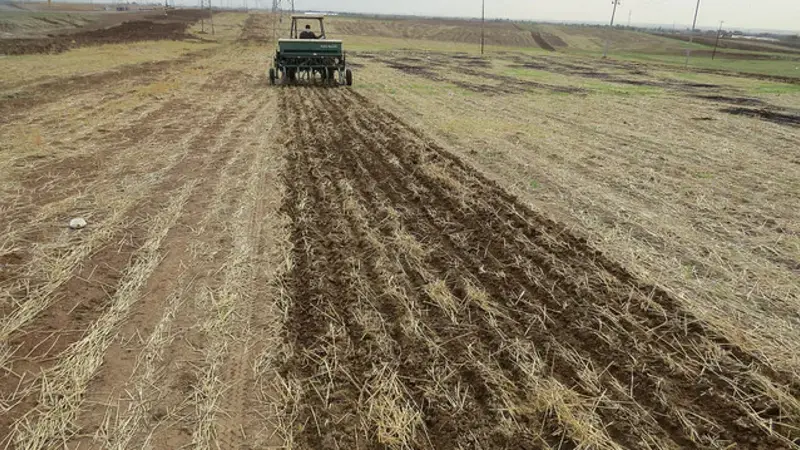Maintaining production in water-scarce environments
Published Date
October 29, 2016

Conservation agriculture is a proven means of stabilizing crop production in water-scarce regions
Across the dry areas of the world, Conservation Agriculture (CA) – the practice of not plowing farmlands and leaving crop residue in the field for improved soil fertility and water conservation – is a proven means of stabilizing crop production, reversing land degradation, and raising farmer incomes.
The ICARDA-led ‘Enhancing Food Security for Arab Countries’ initiative is promoting CA as one of the options that Arab countries can use to alleviate the worsening impacts of climate change, and help maintain wheat production despite higher temperatures and increasing water scarcity.
The introduction of CA has also demonstrated the economic gains that farmers can expect: the practice brings higher yields, and due to the limited land preparation required, can generate significant savings on fuel and labor, boosting farmer profits.
Despite widespread constraints holding back CA’s wider application across the Middle East and North Africa – mostly stemming from limited knowledge, mistaken perceptions that soil cultivation is essential for crop production, and the limited availability of adapted machinery at affordable prices - adoption has been successful across several participating countries.
The impacts of conservation agriculture:
In Jordan, where wheat production is often constrained by prolonged drought, results show that CA is an economically-viable practice for increasing and stabilizing yields. Participating farmers in Irbid, in the country’s far north, experienced average wheat yields that were 16 percent higher than those achieved under conventional practices, generating net returns of 296 USD per hectare (USD/ha).
In Morocco, where policymakers are including CA in a national effort to reverse falling agricultural productivity and stabilize yields, results have also been impressive. CA generated an average 19 percent increase in wheat yields, and by reducing production costs, increased net economic benefits by approximately 122 percent.
In addition to wheat, alternative crops - Canola and forage – also fared well under CA, suggesting that these could be used as replacements or fallow in a wheat-fallow rotation. Even in a drought year – 2013/14 – when conventional practices produced no crop, CA was able to produce some wheat grain.
Despite on-going hostilities in Syria, wheat produced under CA at project demonstration sites generated a 50 percent increase in yields, and positive results were also achieved in Palestine and Tunisia. Despite prevailing drought in Palestine in 2013/14 the introduction of CA brought a 5 percent and 8 percent increase in wheat straw and grain yield. And, finally, in Tunisia wheat sown under CA generated 2.89 tons – a yield increase of 17 percent.
